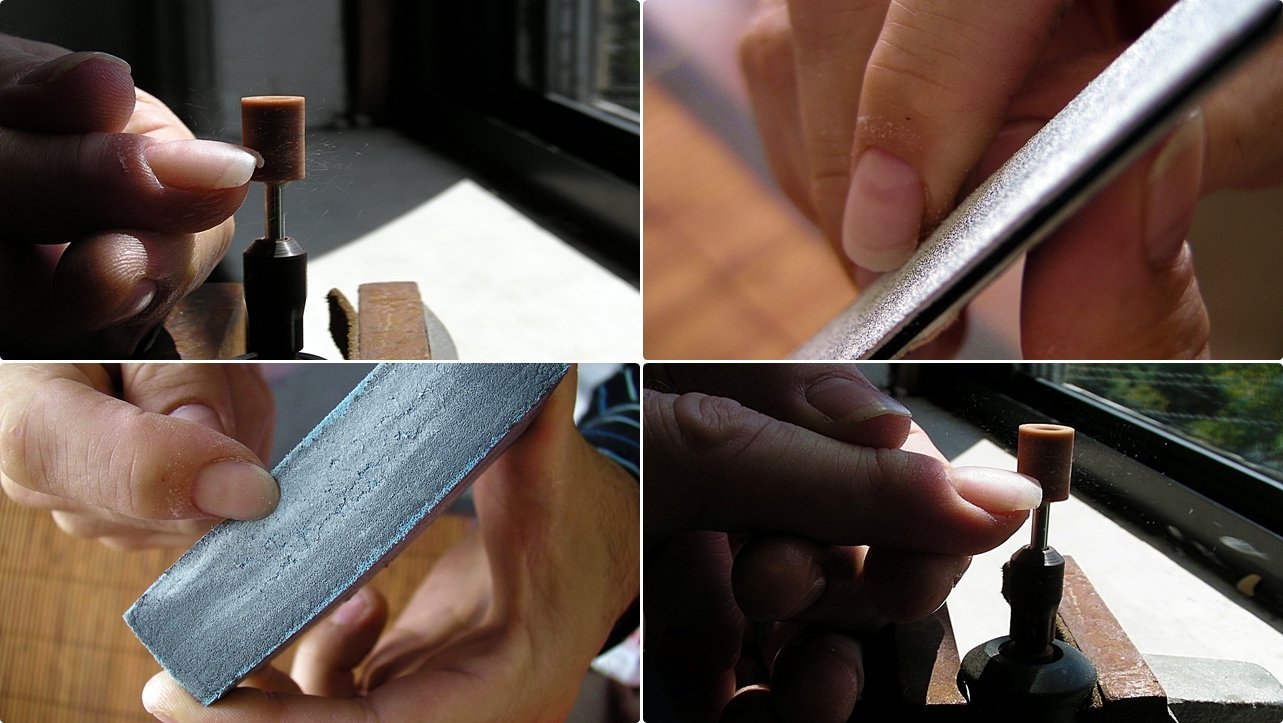How To Care For Right Hand Guitar Nails
Originally published on September 19, 2010
A guitarist’s right-hand fingernails are akin to reeds for a saxophonist, bowstrings for a violinist, or sticks for a drummer. They are the point at which the human interfaces with the instrument. Some care is certainly appropriate.
When I learned proper right hand technique – which I will discuss in detail in another post – I learned how to shape the nails for optimum tone and performance. The nails of the index, middle, and annular fingers (i, m, a) should be rounded to the same contour as the fingertip, protruding just past the flesh by a small amount. This amount will vary with player preference.
The goal is to have a nice blend of nail and flesh in each note. Too much nail produces a thin sound; too much flesh is dull and inarticulate. The nail should also be ‘clean’, in that the outer edge – the point of contact – should be shaped like the top of a school bus when viewed side on, and then polished to at least 600-grit sandpaper. The strings then just roll out from under the finger stroke, producing a lovely focused tone with no scratchy artifacts. Each note becomes “a bell ringing in an empty sky” as my teacher puts it.
A professional guitarist must work a lot, and many different kinds of jobs, in order to make a living. Often times this means beating up your hands when things get rockin’. If you play like you mean it, that is. After those gigs you may notice all your nail care is ruined and you’ll have to wait until they grow back in order to get your sound back for more careful passages. No longer.
Before:
One day while enjoying an afternoon with my lovely wife, she suggested I join her for her appointment at the nail salon. At first I tried the usual excuses to avoid that and meet her afterward, but she just laughed and insisted that it would be fun. Time spent in her company is always time well spent, so I shrugged and agreed to the little adventure. I’m so glad I did.
My wife just got a simple manicure and a fresh paint job (which I usually would do for her by the way, I’m just not so good with the paint…). When I saw what they were doing to the person next to her the light bulb went on over my head. They dip a paintbrush into a solvent [acetone based?], then dip the wet brush into a fine acrylic powder. They then apply the wet goo to the nail and spread it out. If you need the nail to be longer, they put a little extender foil under your nail to support the extra goo as it dries.
There is then a series of steps leading to a final shape. The result is a nail that’s twice as thick and many times stronger.
For the girls this layer is thinner than we guitarists want, so I ask for a bit extra. And of course they insist on making a squared-off end. I have no idea when this fad began but I can’t wait until it’s over. So ugly. It’s certainly not accentuating any natural lines in anyone’s hand. It’s also of course useless for the guitar. When I get home the ritual continues and I shape out the tip the way I normally would at the beginning of a practice session and give it a good polish.
When it’s done I can beat the shit out of my Strat [strung with .011s] on a blues gig, then still do a classical recording session in the morning. No scratches, chips, breaks, tears, nothing. And they last for four to six weeks before they grow out and it’s time to replace them. And the whole thing costs less than $10. Eureka!
After:
One important note: in Manhattan there are many Korean-owned nail salons, most of which are probably fabulous for women. They will not do this procedure. They do something similar with a silk wrap and layer upon layer of super glue and accelerator spray. That’s right – Cyanoacrylate and Freon. You don’t want this stuff in your system. It also chips and breaks within a week. In a pinch before a gig with a broken nail, I’ll get one fixed this way, but never all three. If the shop is Vietnamese, however, chances are good they will do this. They call it ‘sculpture’ or ‘acrylic’ – NOT silk wrap.
SH






